| The Naked City | Aug 18 2011 |

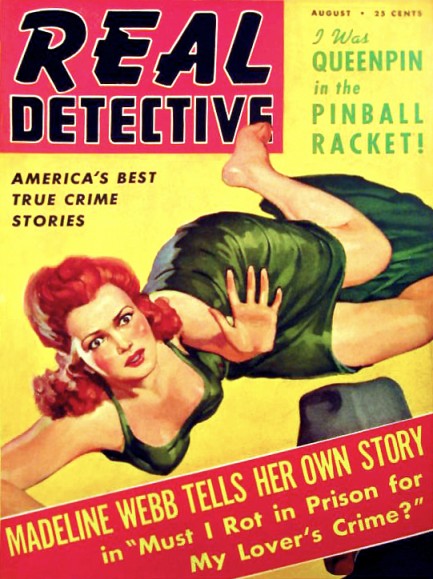
This Real Detective from August 1942 hit newsstands during the height of America’s conflict in the Pacific against the Japanese and it tells the story of Madeline Webb, who was the central figure in a murder case so sensational that it managed to distract the country, however briefly, from war. Webb had moved from Stillwater, Oklahoma to New York City with small town dreams of being a Broadway star. Instead she met a petty crook named Eli Shonbrun and fell in love. Webb was living on an allowance from home, but Shonbrun’s income was more sporadic—he survived by stealing women’s jewelry. Eventually he needed another score and, along with two accomplices named John Cullen and Murray Hirschl, he hatched a scheme to rob a wealthy acquaintance of Webb’s, a woman named Susan Flora Reich.
But when the robbery was over Reich was dead, suffocated by the adhesive tape that had been placed over her mouth. Eli Shonbrun and company went into hiding, but the police soon tracked them down, whereupon Hirschl immediately made a deal to testify against the others. He admitted helping to plan the crime, but swore he was not present in the hotel room where it occurred. Madeline Webb also denied being present, and Shonbrun backed up her claim, but Hirschl said she was lying and had actually lured 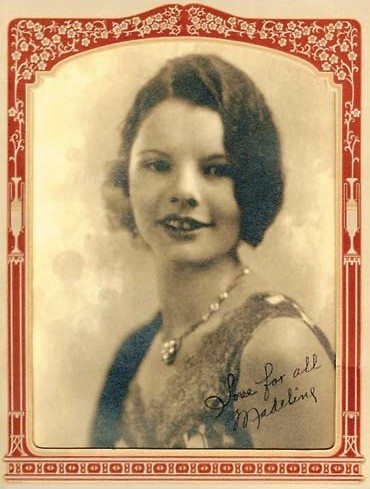 Reich to the hotel. A jury of twelve men deliberated for five hours and returned a verdict of guilty for all three defendants. Shonbrun and Cullen were sentenced to death and Webb was given life in prison. When her punishment was announced in court she sobbed, “Please, please, I didn't!” Shonbrun cried, “You have crucifed her!”
Reich to the hotel. A jury of twelve men deliberated for five hours and returned a verdict of guilty for all three defendants. Shonbrun and Cullen were sentenced to death and Webb was given life in prison. When her punishment was announced in court she sobbed, “Please, please, I didn't!” Shonbrun cried, “You have crucifed her!”
What seemed to mesmerize the American public was the spectacle of Webb and Shonbrun clinging to their love in the face of adversity. They had frequently disrupted the trial with outbursts of support for each other. Whenever Webb seemed to wither Shonbrun managed to pass her notes of encouragement. On the few occasions they came into physical contact they kissed and exchanged “I love yous.” And when Shonbrun’s date with the executioner came in April 1943, he received a final love letter from Webb. He read it in the death chamber at Sing Sing Prison, then surrendered it to the warden to be destroyed. Five minutes after being strapped into the electric chair Eli Shonbrun was dead.
Madeline Webb served twenty-five years at Westfield State Farm in Bedford Hills, New York, and was by all accounts a model inmate. She promoted educational programs for imprisoned women, taught many illiterate inmates to read, and ran the prison library. Her life sentence carried no possibility of parole, but her sentence was commuted in 1967. After her release she returned to Stillwater where she worked with various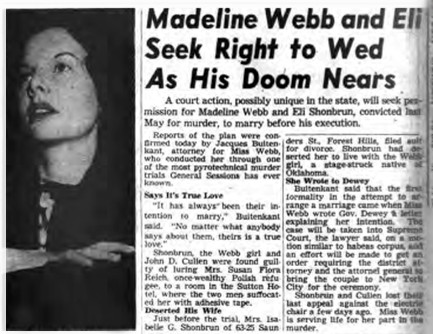 community organizations and cared for her elderly mother, who had spent her life savings on her daughter’s legal fees. Webb died of cancer in 1980 at age sixty-seven, and she did so still protesting her innocence. She was indeed an unlikely murderer. Her family had money back in 1942, and if she had required any she need only have sent a telegram asking for it. But just as New York City proved too much for her show business ambitions, its men may have proved too much for her better judgment. It's entirely possible she was simply too lovestruck by the rough and tumble Eli Shonbrun to derail his scheme. Some light could possibly be shed on this question if the content of her last letter was known—but that went to grave with her.
community organizations and cared for her elderly mother, who had spent her life savings on her daughter’s legal fees. Webb died of cancer in 1980 at age sixty-seven, and she did so still protesting her innocence. She was indeed an unlikely murderer. Her family had money back in 1942, and if she had required any she need only have sent a telegram asking for it. But just as New York City proved too much for her show business ambitions, its men may have proved too much for her better judgment. It's entirely possible she was simply too lovestruck by the rough and tumble Eli Shonbrun to derail his scheme. Some light could possibly be shed on this question if the content of her last letter was known—but that went to grave with her.
| Vintage Pulp | Aug 3 2011 |

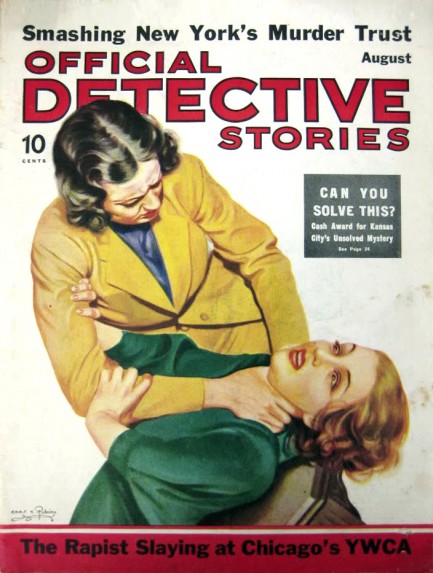
Above, a great cover from Chaz Rubino for Official Detective Stories, August 1936. We’d tell you more about Rubino, but this is the only piece we’ve seen by him, and there’s no info on the internet at all. As for the magazine, Official Detective Stories ran for several decades beginning in the 1930s, and during the 1950s Desilu Productions—i.e. Desi Arnaz and Lucille Ball—even used the magazine as the basis for a television series, but the show didn't catch on and ran for a mere forty episodes. The magazine lasted longer—into the 1990s. Visit our entire true crime magazine collection here.
| Vintage Pulp | Jun 10 2011 |

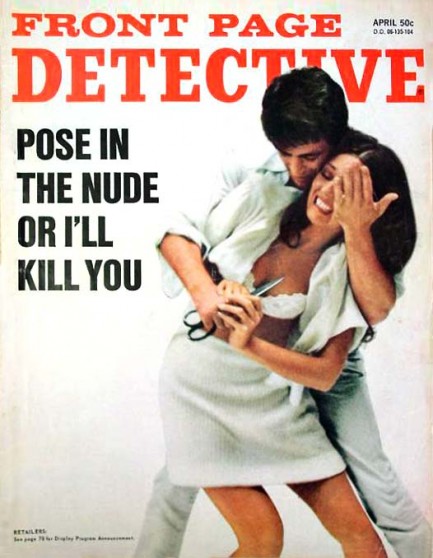
Above, a Front Page Detective from April 1971 with the type of woman-in-trouble cover that became the magazine’s trademark. See more here.
| The Naked City | May 26 2011 |


This May 1973 issue of the true crime magazine Master Detective delves back more than four decades to examine one of the most infamous murders committed in early twentieth century America. The victim was a 12-year old Los Angeles girl named Marion Parker, and on December 15, 1927, she was abducted from her school by a man who used to work for her father. The man—nineteen-year-old William Edward Hickman—came to the school and told the registrar that the girl’s father had been in an accident that morning and wished to see his daughter. It was not policy to release children to anyone other than their parents, but swayed by Hickman’s measured urgency and apparent sincerity, the registrar released Marion Parker into his custody.
Hickman was after money. Marion Parker’s father, a banker named Perry Parker, had it in abundance. For the next few days Hickman sweated Perry Parker, sending pleading notes written by Marion, as well as other notes demanding a ransom. Hickman signed the latter with various pseudonyms, but one in particular stuck with the press—“The Fox.” Eventually, Parker and Hickman agreed on a ransom of $1,500, to be paid 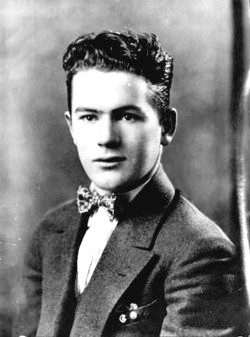 in $20 gold certificates. The first attempt at an exchange failed when Hickman noticed a cop near the meeting place. It’s unclear whether the policeman was part of a trap, but Hickman was taking no chances. He bailed, and set up a second meeting for a few nights later.
in $20 gold certificates. The first attempt at an exchange failed when Hickman noticed a cop near the meeting place. It’s unclear whether the policeman was part of a trap, but Hickman was taking no chances. He bailed, and set up a second meeting for a few nights later.
When Parker reached the rendezvous point he saw Hickman sitting in a parked car. Parker approached the driver side window and saw that the kidnapper was aiming a gun, and he also saw his daughter in the passenger seat, bundled up to her neck in a blanket. She couldn’t move—that was clear. She didn’t speak. Hickman took the ransom and drove quickly away, stopping just long enough to push Marion Parker out of the car at the end of the block. When Parker reached his daughter and lifted her into his arms he screamed in anguish. Marion was dead, and had been for twelve hours. Hickman had cut off her arms and legs, flayed the skin from her back, disemboweled her, and stuffed her with rags. She had been bundled up to conceal the fact that she had no limbs. Her eyes had been wired open so that she would, upon cursory inspection, appear to be alive.
Hickman had escaped, but he had left behind a clue that would lead to his capture. Among the rags he had stuffed into Marion Parker’s empty abdomen was a shirt with a laundry mark that police were able to trace to an address in Los Angeles. Twenty cops descended on a residence that turned out to be occupied by a man named Donald Evans, who was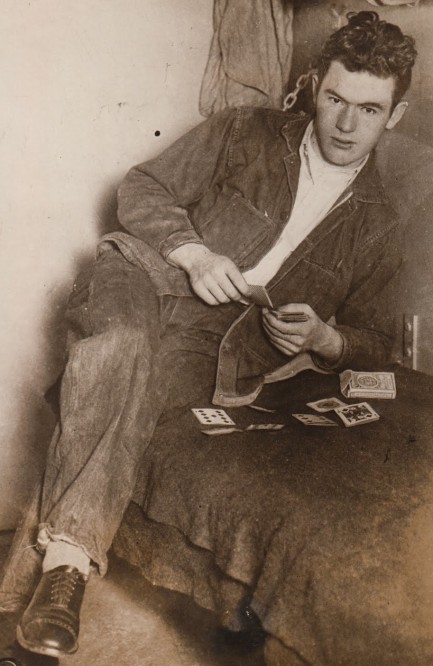 cooperative but said he knew nothing about Hickman. In truth Evans was Hickman, but by the time police figured that out he had fled to the Pacific Northwest. But he hadn’t run far enough. Wanted posters reached every corner of the west coast within days, and just one week after Hickman’s disappearance two police officers in the town of Echo, Oregon recognized him and arrested him.
cooperative but said he knew nothing about Hickman. In truth Evans was Hickman, but by the time police figured that out he had fled to the Pacific Northwest. But he hadn’t run far enough. Wanted posters reached every corner of the west coast within days, and just one week after Hickman’s disappearance two police officers in the town of Echo, Oregon recognized him and arrested him.
At trial, Hickman claimed to be guided by voices—one of the first times, if not the first, that this type of insanity defense was attempted in an American courtroom. But the jury wasn’t buying any of it and they convicted Hickman of murder and kidnapping. The judge sentenced him to be executed at San Quentin State Prison, and he climbed the stairs to the gallows on October 19, 1928. Hickman had once been smooth enough to talk a school official into sending Marion Parker to her doom, and had calmly lied about his identity to twenty cops who had burst into his house. In prison he had corresponded with and impressed author Ayn Rand so much that she decided to base a character on him because he embodied her mythical “Nietzschean Superman” ideal. But at the end, all of Hickman’s considerable aplomb deserted him. Just before the hangman sprang the trapdoor that would cast him into oblivion, he collapsed babbling in fear. His last words were, “Oh my God! Oh my God!”
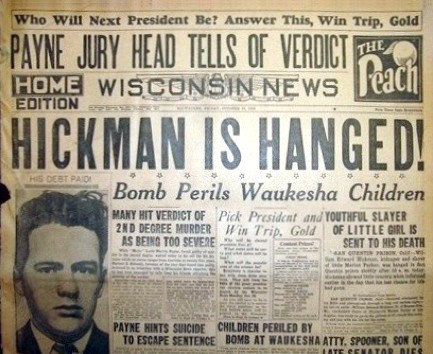
| Vintage Pulp | Dec 26 2010 |


Above is an Inside Detective published December 1966 with a story on the murder of Patricia Woolard. Woolard, during a train ride between Bognor Regis and Gatwick, England, had the misfortune of crossing paths with a young man named Michael Gills, who stabbed her to death in a fit of rage. Gills’ motive? “She snubbed me,” he said. “Women treated me like a leper. All the hate and resentment I had for women came into my head. I stabbed her.” Gills was convicted of manslaughter and served eleven years in prison. His incarceration perhaps taught him not to harm other humans, but sometimes an itch simply must be scratched. In 1998, while working as a beastman for a British circus, Gills was arrested for animal cruelty. Undercover investigators had filmed him beating elephants with iron bars, chains, shovels, and pitchforks. In one incident he flew into a rage and bludgeoned a restrained elephant across the face more than thirty times. He also hit tigers, a bear, and beat a chicken to death against a wall. If human life is cheap, animal life is almost valueless—for all of this, Gills spent a total of four months in jail.
| The Naked City | Nov 23 2010 |

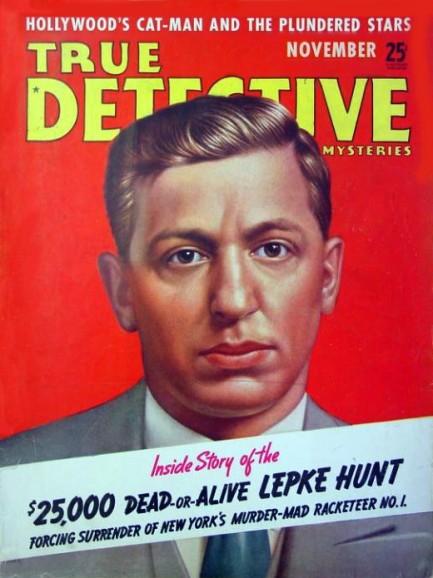
This True Detective from November 1939 features a cover painting of mobster Louis “Lepke” Buchalter, whose flight from authorities had taken him from the U.S. to Mexico, and then to Costa Rica, Puerto Rico and Cuba, and across the ocean to England, France and Germany. Buchalter had begun his career in organized crime by shaking down pushcart operators in Brooklyn, and had risen through the ranks of the criminal-controlled fur industry by doing every type of dirt imaginable, from issuing threatening phone calls to garment union activists to throwing acid in a competitor’s face. Eventually he was running a criminal empire that stretched to both coasts, and was acting as head of the infamous assassination squad Murder, Inc.
In 1936 Buchalter went into hiding after he became aware that criminal charges were being prepared against him. Not long after he dropped out of sight, he was indicted for smuggling an estimated $10 million in heroin into the U.S. from Hong Kong. The FBI printed a million posters and displayed them in every post office, police station, and federal building in America. All this attention was a problem for U.S. mob bosses, and so with characteristic unsentimentality, they decided Buchalter had to surrender. Convincing him was not difficult. While he undoubtedly had the flair and intelligence to dodge the feds indefinitely, living in another country away from the old neighborhood and away from the hundreds of underlings who respected him was not his style. Buchalter was a mobster through-and-through. To him, an anonymous existence, even in a tropical paradise or cosmopolitan foreign capitol, was little different from being in prison.
Buchalter’s associates got word to him that if he came back to the U.S. he would be able to surrender personally to J. Edgar Hoover. Surrendering to the Feds meant he would not face a more serious group of charges brought by Manhattan D.A. Thomas Dewey. But it was wishful thinking. The federal charges were rapidly followed by Dewey’s charges and Buchalter earned a fourteen-year jolt in the pen. His legal team hoped to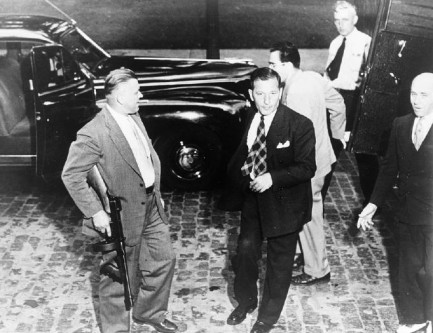 have the sentence reduced via appeals and procedural maneuvers, but when a snitch fingered Buchalter for ordering the murder of a candy store owner named Joe Rosen, he was tried for the killing, convicted, and sentenced to execution. By some estimates Buchalter had been responsible for a thousand murders as head of Murder, Inc., but all it took was one to seal his fate. Louis "Lepke" Buchalter was electrocuted in Sing Sing prison's famous "Old Sparky" electric chair on March 4, 1944, perhaps while realizing life on a beach in Costa Rica hadn’t been so bad after all.
have the sentence reduced via appeals and procedural maneuvers, but when a snitch fingered Buchalter for ordering the murder of a candy store owner named Joe Rosen, he was tried for the killing, convicted, and sentenced to execution. By some estimates Buchalter had been responsible for a thousand murders as head of Murder, Inc., but all it took was one to seal his fate. Louis "Lepke" Buchalter was electrocuted in Sing Sing prison's famous "Old Sparky" electric chair on March 4, 1944, perhaps while realizing life on a beach in Costa Rica hadn’t been so bad after all.
| The Naked City | Vintage Pulp | Oct 28 2010 |

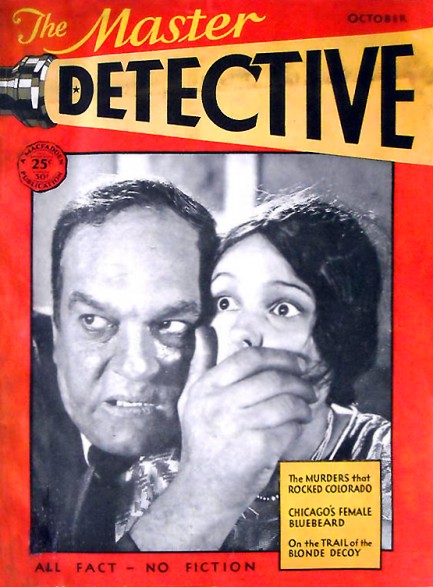
Above is an October 1930 issue of The Master Detective with an article on “Chicago’s Female Bluebeard,” aka Belle Gunness, a Norwegian-born serial killer who offed practically everyone she ever knew over the course of eight years between 1900 and 1908. Records are spotty, but what is known of the story is mightily intriguing. Her first victim may have been her husband, a butcher named Mads Ditlev Anton Sorenson, who took sick and died on the only day when an expiring insurance policy and a new one happened to overlap. However, it’s possible Belle might have already killed two of the couple’s four kids. Officially, the children died of colitis. Colitis has symptoms similar to those for certain types of poisoning, but no inquest was convened, even though Gunness owned insurance policies on both kids. In the case of her husband, questions were asked, but forensic science being what it was back then, no evidence of foul play was uncovered. Cleared of wrongdoing, Gunness left Chicago.
In 1902, now living on a farm in LaPorte, Indiana she had bought with insurance money, Gunness met and married another Norwegian—Peter Gunness, a local butcher. This man who already shared her last name had two young daughters. One of the girls died of a sudden stomach ailment shortly after the wedding, then Peter himself died when a sausage-grinding machine fell on his head, splitting his skull and killing him instantly. At least, that what it looked like. But what had actually happened is that Belle Gunness had hit him with a cleaver. It should be mentioned that she was about five-nine, went 200 pounds and was physically strong. Belle Gunness was charged with murder, but in the absence of solid forensic evidence, the case hinged on hearsay—namely, that of Gunness’s adopted daughter Jennie Olson, 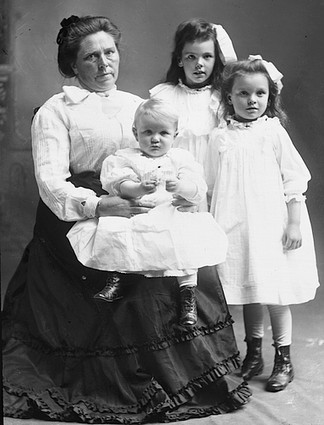 who had told a classmate, “My mama killed my papa. She hit him with a cleaver and he died.” But Olson refused to repeat the statement in court and, since Belle was pregnant, the jury acquitted her. Not long after, young Jennie Olson vanished.
who had told a classmate, “My mama killed my papa. She hit him with a cleaver and he died.” But Olson refused to repeat the statement in court and, since Belle was pregnant, the jury acquitted her. Not long after, young Jennie Olson vanished.
Belle Gunness had acquired butchery skills, and these would soon come in handy. In a local paper she bought an ad in which she described herself as a widow looking for a gentleman. The suitors came calling and the corpses began piling up. It’s impossible to say for sure how many she murdered. Only one fact is certain—she began ordering lots of steamer trunks. The only reason Belle Gunness was ever caught is because her live-in farmhand, a man named Ray Lamphere, had fallen in love with her. Lamphere was well aware of Belle’s activities, and began to make thinly veiled threats when it became clear she wasn’t interested in him. Belle retaliated by firing him then trying to get him locked in an asylum, and Lamphere retaliated in turn by arousing the suspicions of a man whose brother had gone missing on the farm. In the end, she had no choice to but to agree to a police search of the place. The game was up, but that didn’t mean she had to stick around for the conclusion.
On April 28, 1908 the Gunness farmhouse caught fire. By the time emergency crews arrived the place was cinders. In the basement four bodies were found—those of Gunness’s three children and the body of a woman that couldn’t be identified because it was headless. The headlessness pointed to murder, and so police arrested Ray Lamphere. They believed he had killed Belle Gunness and her children, then set the 
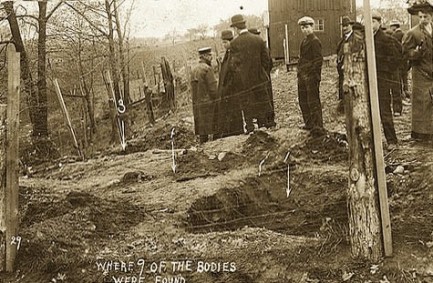 fire to cover up his crime. Continued digging in the basement finally unearthed Belle Gunness’s dental bridge near where the unidentified corpse had been found. It seemed Gunness was dead. Meanwhile, evidence of serial murder emerged when excavations in the farm’s hog pen, pictured above, uncovered a mass grave. Inside was interred the body of Jennie Olson and many other victims. The morbid case became a nationwide sensation.
fire to cover up his crime. Continued digging in the basement finally unearthed Belle Gunness’s dental bridge near where the unidentified corpse had been found. It seemed Gunness was dead. Meanwhile, evidence of serial murder emerged when excavations in the farm’s hog pen, pictured above, uncovered a mass grave. Inside was interred the body of Jennie Olson and many other victims. The morbid case became a nationwide sensation.
At trial Ray Lamphere had a novel defense—he said he wasn’t guilty of murder because Belle Gunness wasn’t dead. The jury agreed there was indeed reasonable doubt about this—the body from the fire was about six inches shorter than Gunness, even accounting for the missing head. Lamphere was acquitted of murder but jailed for arson. He would last in prison only for a year before dying of consumption, but before his death he told the whole story. According to him, Belle had been killing for years, usually with a cleaver to the skull or chloroform. She would then dismember the bodies using her butchery skills, and he would help bury the pieces. The motive was simple—Belle was hungry for money. The killings sometimes triggered insurance payments; other times Belle killed after suitors had lent her large amounts of cash.
Ray explained that when the LaPorte police began nosing around, he and Belle forgot their differences and worked out a plan to escape town together. She killed her three children and a local woman whose body would serve as a decoy, left them in the basement of the farmhouse with her dental bridge, and dumped the decapitated head in a swamp. Lamphere torched the place, and they were to meet at a crossroads like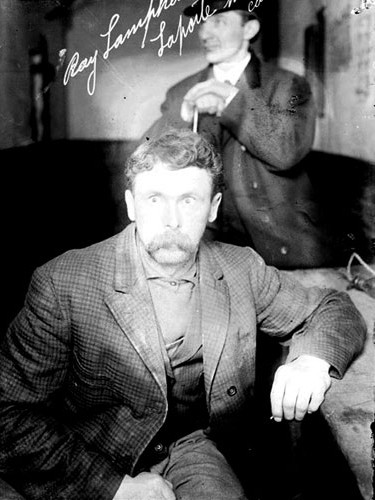 eloping lovers and venture forth toward their new lives. Instead, Lamphere claimed Gunness cut across a deserted wood and ditched him. According to him, she escaped with all the cash from her various insurance murders and scams—some $250,000, or about 7 million in modern money. A check of local banks revealed that her accounts had been emptied just before the fire. Belle Gunness—killer of forty-two people according to Ray Lamphere—had outsmarted everyone and vanished for parts unknown with a fortune.
eloping lovers and venture forth toward their new lives. Instead, Lamphere claimed Gunness cut across a deserted wood and ditched him. According to him, she escaped with all the cash from her various insurance murders and scams—some $250,000, or about 7 million in modern money. A check of local banks revealed that her accounts had been emptied just before the fire. Belle Gunness—killer of forty-two people according to Ray Lamphere—had outsmarted everyone and vanished for parts unknown with a fortune.
The Gunness case is one of particular interest to murder historians, partly because the lack of solid records leaves so many gaps in the narrative. The summary you’ve just read follows one line of reasoning, but in truth, there is doubt about where she lived and when, who she met and when, and even how many children she had. There are many questions over whether she actually escaped. Some believe Lamphere killed her and ditched the body. There is also a theory, supported by intriguing circumstantial evidence, that she went on to kill more people in California. DNA tests on Gunness descendants might clear up some questions, but these are pending as of today. In any case, it’s safe to say that Belle Gunness is one of the most accomplished killers who ever lived. Her story—whichever one you prefer—proves once again what we always say here at Pulp Intl. The world hasn’t grown crueler. It was always that way.
| The Naked City | Vintage Pulp | Oct 7 2010 |

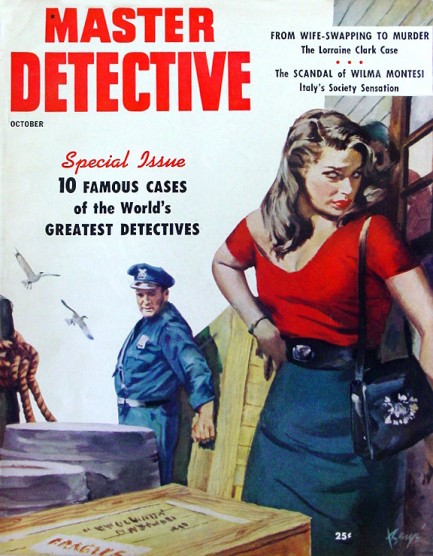
We double up on the murders today, thanks to the always informative true crime magazine Master Detective. This issue is from October 1954, with Barye Phillips cover art, and amongst the horrors revealed is one involving Massachusetts spouses Melvin and Lorraine Clark. The Clarks were heavy into key-swapping parties, at which opposite sexes blindly selected each other's keys from a bowl or sack to randomly determine who would be whose companion for the evening. If you’ve ever seen the Sigourney Weaver movie The Ice Storm, it was exactly like that—a few drinks, a few joints, and some freewheeling, no-strings-attached sex.
But when Melvin came home the night of April 10, 1954, and found Lorraine in bed with another man outside the context of a swapping party, an argument ensued that escalated to the point where Lorraine stabbed her husband with a knitting needle and shot him twice. She wrapped Melvin’s body in chicken wire, weighed him down with a cement block or two, and dumped him off Rocks Village Bridge into the Merrimack River, where the current was supposed to carry him out to sea.
She wrapped Melvin’s body in chicken wire, weighed him down with a cement block or two, and dumped him off Rocks Village Bridge into the Merrimack River, where the current was supposed to carry him out to sea.
Lorraine never expected to see her husband again we can be sure, and even filed for divorce as part of her cover story, claiming he had abandoned her after a bitter confrontation. But Melvin hadn’t abandoned her—in fact, he hadn’t gone far at all. A bird watcher found his mostly skeletonized body in a riverside marsh in early June.
Under police questioning Lorraine caved in pretty much immediately and, long story short, earned a life sentence in federal prison. She never named an accomplice, but no bodybuilder she, it seemed clear she could not have done the heavy lifting involved in the murder without a helping hand. Also, for someone who had little to no experience with firearms, she sure had good aim. Melvin had taken one in the forehead and one in the temple. But Mrs. Clark was not pressed to name a partner in crime, did her time in silence, and was eventually paroled. In retrospect, you wonder if local bigwigs wanted the case to go away. After all, you meet the most interesting people when you swap.
Master Detective treats us to a second fascinating story, this one on Italian fashion model Wilma Montesi, who in April 1953 was found dead on Plinius Beach near Ostia, Italy. Police declared her death a suicide or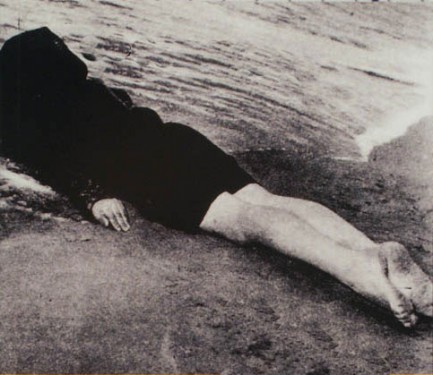 accidental drowning—case closed. But the public had many questions. How had she drowned in just a few inches of water? If it was suicide, why had she shown no signs of depression? Why were her undergarments in disarray? The police weren’t keen to reopen the case, but agreed to an informal re-investigation. Weeks later they announced once more: suicide or accidental drowing. But the public suspected cops weren’t trying to reach any other conclusion.
accidental drowning—case closed. But the public had many questions. How had she drowned in just a few inches of water? If it was suicide, why had she shown no signs of depression? Why were her undergarments in disarray? The police weren’t keen to reopen the case, but agreed to an informal re-investigation. Weeks later they announced once more: suicide or accidental drowing. But the public suspected cops weren’t trying to reach any other conclusion.
When the editor of the neo-fascist paper Attualita charged in print seven months later that Wilma Montesi had not gone to Ostia the day of her death, but to a fancy hunting lodge in nearby Capocotto, the story was not just ignored—Italian authorities hauled the editor before a court and threatened him with charges for spreading false information. But his tale was backed up by a witness—Anna Maria Caglio, who had spent time at the lodge and dropped a bomb on Italian society when she said it was a front for drugs and sex parties—sort of like The Ice Storm again, but with much richer and more powerful people involved. By powerful, 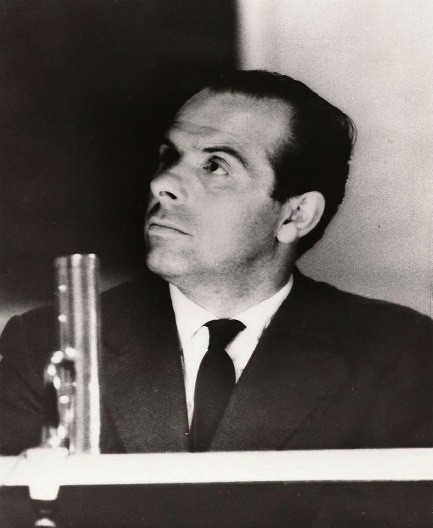 we're talking about judges, politicians, the Pope’s personal physician and other Vatican officials, and the well-connected Foreign Minister’s son Piero Piccioni, who you see pictured just above.
we're talking about judges, politicians, the Pope’s personal physician and other Vatican officials, and the well-connected Foreign Minister’s son Piero Piccioni, who you see pictured just above.
When the national Communist party began making waves, the carabinièri—Italy’s military police—stepped in. Like the local cops, they weren’t keen to pursue the case, but they weren’t about to let the Communists break it open and potentially expose the corruption of the entire political establishment. The carabinièri’s involvement angered many upper crust Italians, but when their officers walked the streets during those months the general public literally applauded them for daring to tread where the police had not.
Their investigation soon focused on Piccioni, who besides being the scion of a political family was a famous jazz composer. But Piccioni had an alibi—at the time of the murder he was in the house of actress Alida Valli in Amalfi, where he claimed to be sick in bed. Rumors sprang up that he was Valli’s lover. Why did anyone care? Because Valli, a big star at the time who had appeared in Orson Welles’ The Third Man, was married to another famous musician, Oscar de Mejo. The case was now a full-blown media circus.
This is the way it may have gone: every direction the carabinièri turned, politically connected Italians threw up walls in their path. Alternatively, it may have gone like this: the carabinièri made a noisy show of annoying a few heavy hitters, but were only performing for a suspicious and cynical public. What was clear 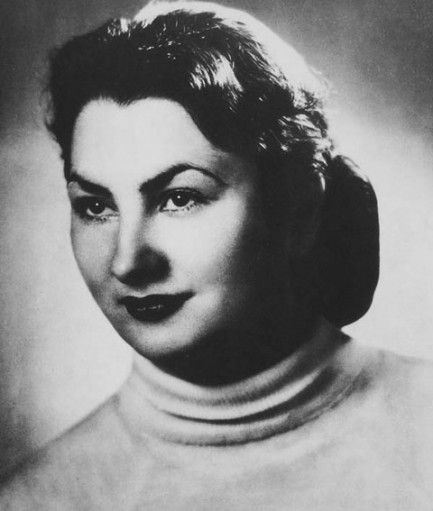 was very powerful people wanted the orgiastic activities in Capacotto forgotten.
was very powerful people wanted the orgiastic activities in Capacotto forgotten.
Behind the scenes manuvering was rife. Anna Maria Caglio even wrote a letter to the Pope warning him that there were people around him who meant him harm, presumably because they wanted to expose the involvement of Vatican officials in the late night shenanigans at the lodge. Pressure came down from the highest levels of the Italian establishment to put the case to bed quickly. It wasn’t quick.
But neither was it necessarily thorough. Eventually four people were brought to trial, including Piero Piccioni. All were acquitted. Perhaps the only consequence of the investigation is that it became one of the most celebrated mysteries of all time, inspiring many books, and even a symbolic reference in the incomparable Federico Fellini film La Dolce Vita. But what really happened to Wilma Montesi? Nobody knows. Today the case is still unsolved.
| Vintage Pulp | Oct 5 2010 |

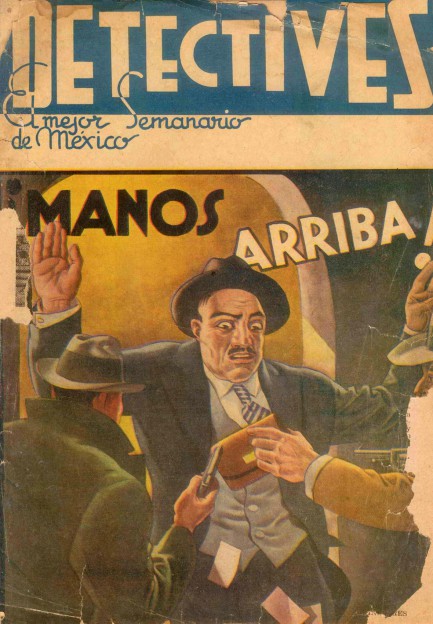
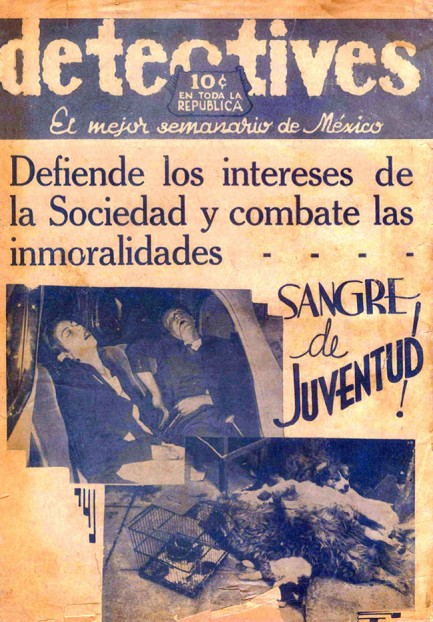
Detectives magazine published in Mexico, with a great illustration on the front cover and a rear consisting of two unfortunate bystanders who got caught in a crossfire, and a shot at lower right of a hapless sheep that likewise bit the dust, October 1936. The rear cover says, "Defends the interests of society and combats immoralities", and the caption at right screams, "Blood of the youth!" What do sheep have to do with it? We don't know. You can see more Detectives by clicking keyword “Detectives” below.
| Vintage Pulp | Sep 17 2010 |

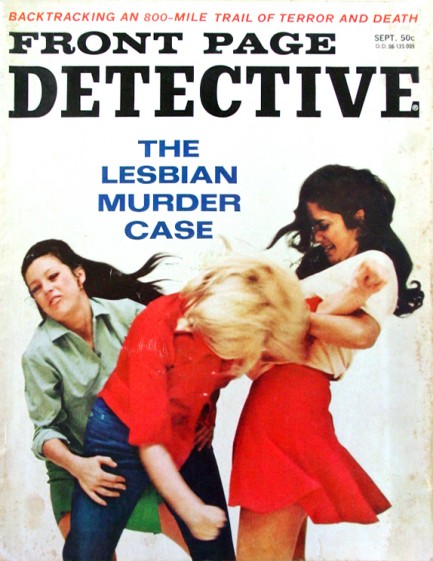
 |
 |




































































